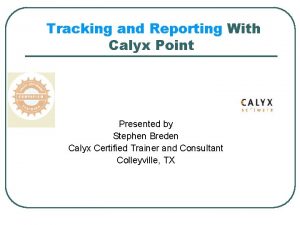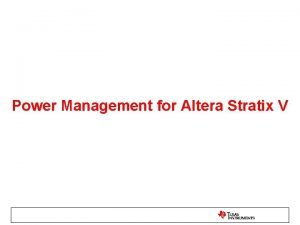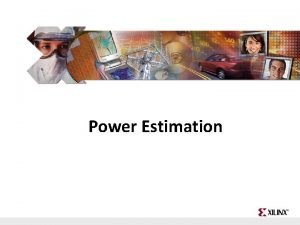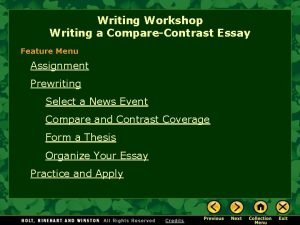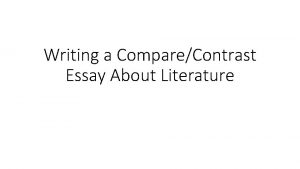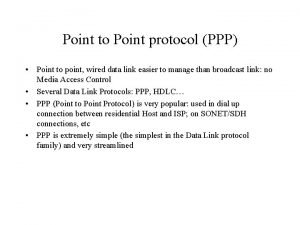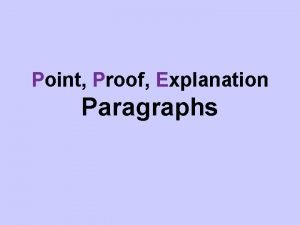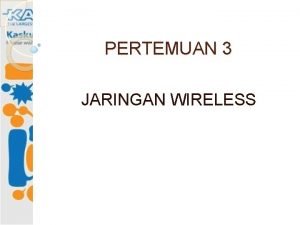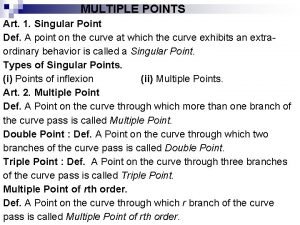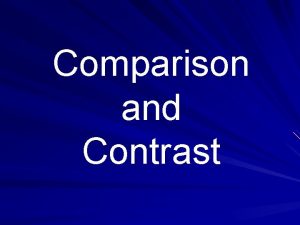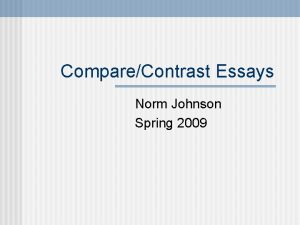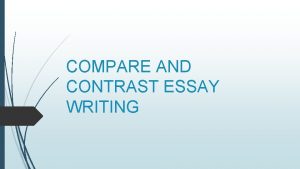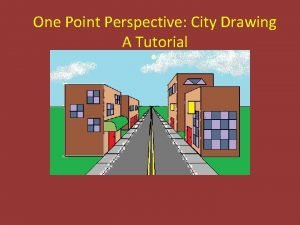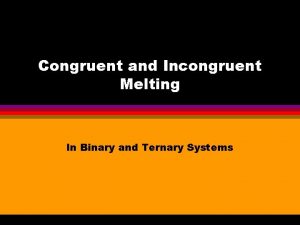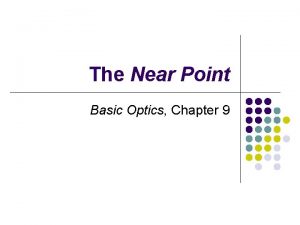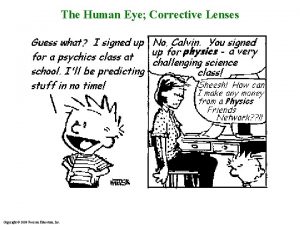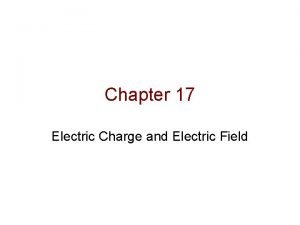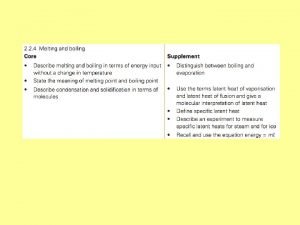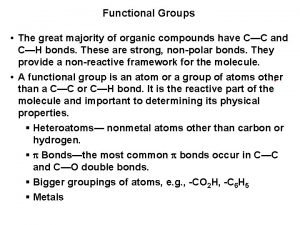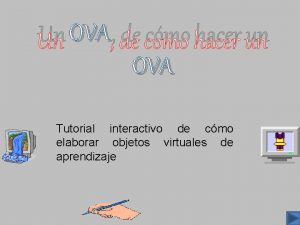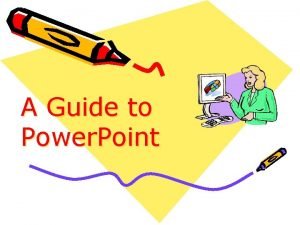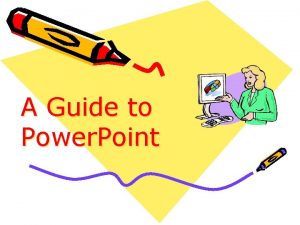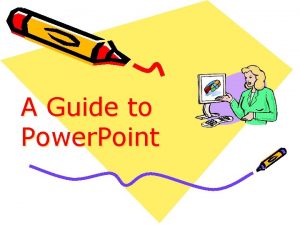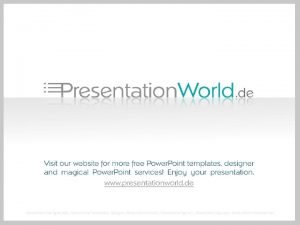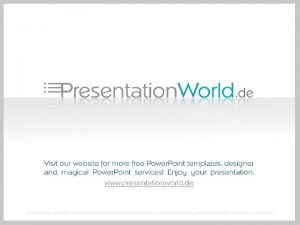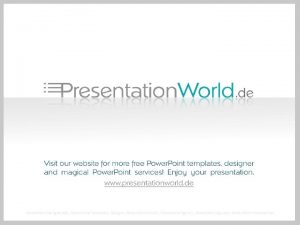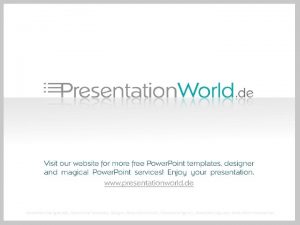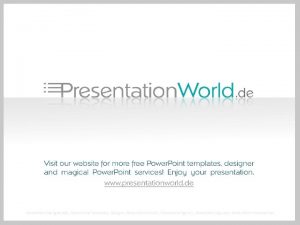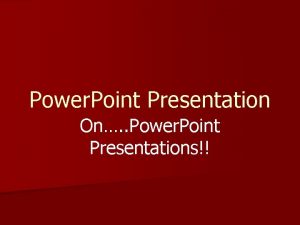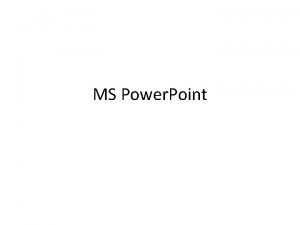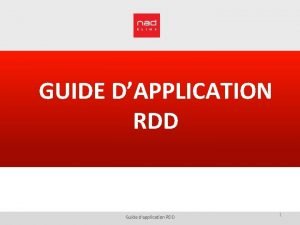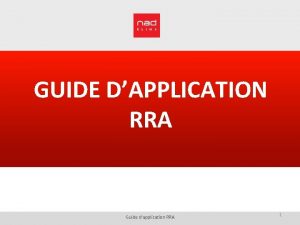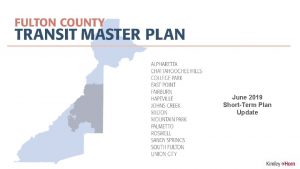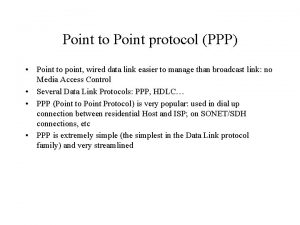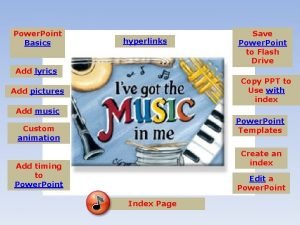A Guide to Power Point Power Point Power













































- Slides: 45

A Guide to Power. Point

Power. Point • Power. Point is a part of the Microsoft Office package. • It is a presentation software program that has many of the functions available in Microsoft Word.

Power. Point Continued • To display a presentation, you need: – A computer (desktop or laptop) – LCD projector – White board or screen for projection

Seeing (and Hearing) Is Believing • Power. Point presentations can enhance understanding and retention of concepts. • Audiovisual aids should be relevant to the speech topic.

Designing Presentation Aids Simplicity • Do not add too much content. – Keep bullets short • Visual aids should: – Reinforce – Support – Summarize what you say

Designing Presentation Aids Continuity • Use the same design throughout your presentation

Designing Presentation Aids Continuity • Maintain continuity in: – Colors – Fonts – upper and lowercase letters – Styling • Boldface • Underlining • Italics

Designing Presentation Aids Typeface • Typeface: – a specific style of lettering • Arial • Times Roman • Courier New • Tahoma • Monotype Corsiva

Designing Presentation Aids Font Size • Fonts: – sets of sizes (called the point size) • 24 point • 20 point • 18 point • 16 point • 10 point – upper and lower cases

Designing Presentation Aids Typeface Style And Font Size • Check that your lettering stands apart from your background. • Use a typeface that is simple, easy to read, and doesn’t distract from your message. • Don’t overuse boldface, underlining or italics. Use upper-and lowercase type.

Designing Presentation Aids Color • Use bold, bright colors to emphasize important points. • Use softer, lighter colors. • Avoid dark backgrounds.

A How-To Guide for Using Microsoft Power. Point as a Presentation Aid

How-To Guide to Power. Point • This guide offers straightforward advice that will help you use Microsoft Power. Point to create effective and enjoyable presentations.

You don’t want your slides to look like this: Title too small Font is small and hard to read Clip art is too large; only one piece is necessary Colors on the slide are distracting Texts overlap and have strange formatting

Let’s Begin! • Power. Point is a Microsoft application. • If you are proficient in programs such as Word and Excel, you are already familiar with over 100 common commands used by Microsoft Office software.

Let’s Begin! • NOTE: All of the icons, example buttons, and toolbars shown in this slide show are taken from the MS Power. Point 2007.

To Use Power. Point • • • Become familiar with the toolbars Select your presentation option Learn how to create a slide Learn how to organize design elements Learn how to balance design elements









Press F 5 Press Shift+F 5

Switching Views and Navigating a Presentation • The Power. Point window contains features common to all Windows programs, as well as features specific to Power. Point – Slide pane – Notes pane – Slides tab • Thumbnails – Outline tab

Switching Views and Navigating a Presentation • At the lower right of the Power. Point window, on the status bar to the left of the Zoom slider, are three buttons you can use to switch views – Normal view – Slide Sorter view – Slide Show view

Adding a New Slide and Choosing a Layout

Previewing and Printing a Presentation • Power. Point provides several printing options – Color, grayscale, or pure black and white – Handouts are printouts of the slides themselves; these can be arranged with several slides printed on a page – Overhead transparency film • Print Preview allows you to see the slides as they will appear when they are printed

Previewing and Printing a Presentation

Previewing and Printing a Presentation

Organizing Text • Use a readable font and font size for each different aspect of the page (a good size range is between 20 -60 points). • Be consistent from slide to slide with fonts and font sizes. • Choose colors that will ensure that your text is readable and your slides do not appear distracting.

Organizing Text • Don’t use too many different fonts. • DON’T USE ALL CAPS. • Avoid fonts that are distracting: – Braggadocio – Oz. Handicraft BT – Shelley Volante BT

Organizing Text • Don’t include your entire speech on the slides. Instead highlight important points. • To determine what information is best to include in your presentation, you should: • Review your speech outline. • Identify points that can be illustrated, such as key terms and their definitions, statistics, or charts and graphs.

Organizing Clip Art and Pictures • To insert clip art onto your slide you can: • Select a slide layout that has a set space for clip art. When working on that slide, simply double-click on the clip art space and it will take you to the Microsoft Clip Gallery. • Use the Insert menu, click Picture, and then select Clip Art. • Click on the shortcut icon:

Organizing Clip Art and Pictures • Remember: use clip art, pictures, charts, and graphs only to illustrate points, not as fillers.

Organizing Animation Effects • Power. Point has a variety of different ways that text and art can be animated. • For example: Fly from Bottom-Left Blinds Vertical Dissolve Peek from Bottom Spiral Stretch from Top Wipe Right Appear Zoom In Box Out Checkerboard Across Crawl from Right

Organizing Animation Effects • These effects can be interesting additions to your presentation, but they can also be distracting. Use them sparingly to add emphasis. • To animate, right-click on the text or image and select Custom Animation from the menu. • Select the effect you want to use, determine the order of the animations on the slide, and make sure to preview.

Organizing Animation Effects • Take time while in this screen to determine how your animation effects will appear. • Clicking on the Timing menu gives you options so that your textboxes, clip art, and other animation elements can be presented on a mouse click, automatically, or automatically after a preset length of time.

Balancing the Elements • Even if you follow all the suggestions for setting up your slide and its elements, you still may find that your presentation is hard to follow. • It is important to go back through your completed presentation and make sure that the overall experience of watching it is pleasant as well as educational.

Balancing the Elements • Defining a balanced slide may seem like a matter of opinion, but there are concrete criteria, including: • Clip art and text must fit together well. No element -- title, points, graphics -- should overpower the others. • Headings should be consistent in size and placement. They should be large and clear. • Easy to understand.

Example of a Balanced Slide Text is easy to read and well sized. The clip art illustrates the slide and is well placed on the layout. The title is large and clear. Good use of contrasting colors on slide and in font.

Example of an Unbalanced Slide Text is too small. Title and color scheme are still fine. Clip art is too large. This slide is hard to read and places unnecessary emphasis on the artwork.

Giving Your Presentation • Practice your speech • Time yourself.
 Point point power
Point point power Powerbi in powerpoint
Powerbi in powerpoint Triangle of power
Triangle of power Calyx point printer not activated
Calyx point printer not activated Stratix 10 power management user guide
Stratix 10 power management user guide Spartan 6 power estimator
Spartan 6 power estimator Patterns of power study guide
Patterns of power study guide Point by point block method
Point by point block method Point-by-point essay examples
Point-by-point essay examples Point-by-point arrangement
Point-by-point arrangement Hub-and-spoke system pros and cons
Hub-and-spoke system pros and cons Point-to-point protocol
Point-to-point protocol Point information explanation
Point information explanation Topologi ibss
Topologi ibss How to draw stairs in 2 point perspective
How to draw stairs in 2 point perspective A double point on a curve is a cusp if two tangents are
A double point on a curve is a cusp if two tangents are A line is a moving point towards certain direction
A line is a moving point towards certain direction Flash point vs boiling point
Flash point vs boiling point Point by point block method
Point by point block method Point-by-point arrangement
Point-by-point arrangement Point by point block method
Point by point block method Compare and contrast transition words
Compare and contrast transition words Dew point and bubble point calculation
Dew point and bubble point calculation Point of difference and point of parity
Point of difference and point of parity City side drawing
City side drawing Fixed point representation vs floating point
Fixed point representation vs floating point Congruent melting example
Congruent melting example Difference between endpoint and equivalence point
Difference between endpoint and equivalence point Paisjet e lan ne nje topologji
Paisjet e lan ne nje topologji Steve walks from point p to point q
Steve walks from point p to point q Tact extensions aba
Tact extensions aba Far point near point
Far point near point Far point near point
Far point near point Point to point links in optical fiber communication
Point to point links in optical fiber communication Cross country definition
Cross country definition A point p is equidistant from both point charges
A point p is equidistant from both point charges Point-by-point essay outline example
Point-by-point essay outline example Cloud point and pour point
Cloud point and pour point Latent heat
Latent heat Grade point average
Grade point average Getting from point a to point b
Getting from point a to point b Intermolecular forces of functional groups
Intermolecular forces of functional groups Evangelio del domingo en power point
Evangelio del domingo en power point Como hacer un ova
Como hacer un ova La boutique del powerpointx
La boutique del powerpointx Tennis powerpoint
Tennis powerpoint



